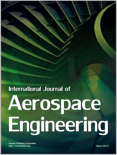
International Journal of Aerospace Engineering
Scope & Guideline
Catalyzing Collaboration in Aerospace Research
Introduction
Aims and Scopes
- Aerospace System Design and Optimization:
Research focusing on the design methodologies for various aerospace systems, including optimization techniques for aircraft, spacecraft, and UAVs, utilizing computational and analytical methods. - Control Systems and Automation:
Studies related to control strategies and automation processes in aerospace applications, including fault-tolerant control, guidance systems, and trajectory planning for UAVs and other aircraft. - Aerodynamics and Fluid Dynamics:
Investigation of aerodynamic characteristics, flow behavior, and thermal dynamics associated with various aerospace vehicles, emphasizing computational fluid dynamics (CFD) and experimental validation. - Propulsion Systems and Combustion:
Research on the development and optimization of propulsion systems, including traditional engines and innovative concepts such as scramjets and hybrid propulsion technologies. - Materials and Structural Engineering:
Exploration of advanced materials and structural designs for aerospace applications, including lightweight composites, fatigue analysis, and thermal protection systems. - Space Technology and Exploration:
Studies on spacecraft design, orbital mechanics, and technologies for space missions, including satellite formation flying and space debris management. - UAV and Autonomous Systems:
Research on unmanned aerial vehicles (UAVs), focusing on cooperative control, path planning, and applications in various fields such as agriculture, surveillance, and disaster response.
Trending and Emerging
- Artificial Intelligence and Machine Learning in Aerospace:
An increasing number of studies are leveraging AI and machine learning techniques for applications in aerospace, including optimization, predictive maintenance, and autonomous systems. - Sustainable and Green Technologies:
Research focused on sustainable aviation practices, including eco-friendly propulsion systems, noise reduction technologies, and lifecycle assessment of aerospace materials is gaining traction. - Advanced Manufacturing Techniques:
There is a growing interest in additive manufacturing and 3D printing technologies for aerospace applications, emphasizing the development of complex geometries and lightweight structures. - Cybersecurity in Aerospace Systems:
As aerospace systems become more connected, research addressing cybersecurity challenges related to UAVs, satellite communications, and avionics systems is increasingly prominent. - Human Factors and Pilot-Automation Interaction:
Emerging studies are focusing on the human factors involved in aerospace operations, particularly in the context of automation and the interaction between pilots and advanced control systems. - Integrated Multidisciplinary Design Optimization (MDO):
Increasingly, research is centered on integrated approaches that combine various disciplines—such as aerodynamics, structures, and control systems—within the design optimization process.
Declining or Waning
- Conventional Aerodynamics:
Traditional studies on basic aerodynamic principles without integration of advanced computational methods or experimental techniques have decreased, as research increasingly focuses on complex flow phenomena and real-world applications. - Static Structural Analysis:
Research focused solely on static analysis of aerospace structures has waned, as there is a growing emphasis on dynamic and time-dependent behaviors, including aeroelasticity and vibration analysis. - Basic Propulsion Concepts:
Studies that only address fundamental propulsion concepts without consideration of modern advancements such as hybrid systems and high-performance engines are less frequently published. - Historical Studies in Aerospace Engineering:
There has been a noticeable decline in papers that focus on historical analysis or retrospective studies of aerospace technologies, as the journal shifts toward contemporary challenges and future innovations.
Similar Journals

Aerospace
Advancing the Frontiers of Aviation and SpaceAerospace is a premier open-access journal published by MDPI, established in 2014 and dedicated to the dynamic field of aerospace engineering. With an impressive Q2 ranking in the 2023 category of Aerospace Engineering, this journal is a vital resource for researchers, professionals, and students interested in advancements and innovations in aerodynamics, avionics, propulsion, and more. Operating from Switzerland, Aerospace provides a platform for the dissemination of high-quality research articles and reviews, contributing to the ongoing dialogue in the aerospace community. This journal not only enhances visibility through its open access model but also ensures that critical knowledge is freely available, fostering collaborative efforts and inspiring the next generation of aerospace engineers. With a Scopus ranking of #60 out of 153 in the Aerospace Engineering category, it plays a significant role in shaping the future of aviation and space exploration.

AIRCRAFT ENGINEERING AND AEROSPACE TECHNOLOGY
Advancing aerospace innovation through rigorous research.AIRCRAFT ENGINEERING AND AEROSPACE TECHNOLOGY, published by Emerald Group Publishing Ltd, is a leading peer-reviewed journal dedicated to advancing the fields of aerospace engineering and technology. With a strong emphasis on innovative research, the journal aims to bridge theoretical developments and practical applications within the aerospace sector. Although the journal does not currently offer open access, it continues to enrich the academic community's understanding of aircraft design, maintenance, and engineering processes, making it a crucial resource for researchers, professionals, and students alike. By fostering a rigorous dialogue among experts, AIRCRAFT ENGINEERING AND AEROSPACE TECHNOLOGY ensures the dissemination of cutting-edge findings and promotes sustainable practices in the aerospace industry, highlighted by its commitment to high-quality scholarship.
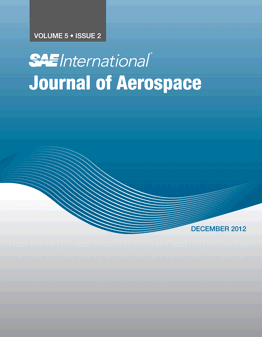
SAE International Journal of Aerospace
Fostering the Future of Aerospace Technologies.The SAE International Journal of Aerospace, published by SAE International, serves as a critical platform for innovative research and advancements within the field of aerospace engineering. With an ISSN of 1946-3855 and an E-ISSN of 1946-3901, this esteemed journal contributes significantly to the body of knowledge in the aerospace sector, boasting a convergence span from 2008 to 2024. While currently categorized in Q4 of Aerospace Engineering, the journal is dedicated to fostering emerging ideas, technologies, and methodologies that could eventually elevate its standing. Although it does not offer open access options, the journal ensures wide dissemination of its well-curated articles to aid researchers, professionals, and students in staying abreast of the latest developments and trends. Given its distinct focus and commitment to the aerospace community, the SAE International Journal of Aerospace plays an essential role in bridging theory and practice, making it a valuable resource for those within this vital and evolving field.

CEAS Space Journal
Connecting research and innovation in the realm of space.CEAS Space Journal, published by SPRINGER WIEN, serves as a critical platform for advancing knowledge in the fields of aerospace engineering and space science. With an ISSN of 1868-2502 and an E-ISSN of 1868-2510, this journal has been at the forefront of scholarly communication since its inception in 2011, showcasing cutting-edge research that spans to the present day (2024). The journal holds a solid reputation, ranking in the Q2 quartile for Aerospace Engineering and Q3 for Space and Planetary Science as of 2023, illustrating its impactful contributions within these disciplines. Scopus rankings further underline its prominence, placing it in the 70th percentile among aerospace engineering journals. Although it is not an open access publication, the insights published in the CEAS Space Journal are invaluable for researchers, professionals, and students alike, providing essential studies and reviews that push the boundaries of aerospace innovation and planetary exploration. The journal's commitment to quality and rigor makes it an indispensable resource for anyone looking to deepen their understanding of contemporary challenges and technological advancements in space science.
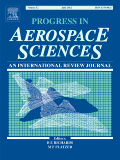
PROGRESS IN AEROSPACE SCIENCES
Delivering premier research for the aerospace industry.PROGRESS IN AEROSPACE SCIENCES is a prestigious journal published by PERGAMON-ELSEVIER SCIENCE LTD, recognized as a leading platform in the field of aerospace engineering, mechanical engineering, and mechanics of materials. With an impressive history dating back to 1961, the journal covers a wide spectrum of topics pivotal to advancing aerospace technology and innovation. Its recent ranking as Q1 in multiple engineering categories underscores its significance, ranking #1 in Aerospace Engineering and placing within the top 20 percentile in both Mechanical Engineering and Mechanics of Materials, according to Scopus assessments. Researchers, professionals, and students looking to engage with high-impact research will find PROGRESS IN AEROSPACE SCIENCES an invaluable resource, offering insights into cutting-edge developments and methodologies. Although it does not operate under an open-access model, the journal upholds rigorous peer-review standards, ensuring that the published content meets the highest academic integrity. Situated in the United Kingdom, it plays a critical role in fostering international collaboration and knowledge-sharing in the aerospace sector.

Journal of the Korean Society for Aeronautical and Space Sciences
Connecting Researchers for a Thriving Aerospace CommunityThe Journal of the Korean Society for Aeronautical and Space Sciences is a dedicated platform for the dissemination of cutting-edge research in the fields of aerospace engineering and space sciences. Published by the esteemed Korean Society for Aeronautical & Space Sciences, this journal aims to bring together innovative findings and technological advancements from around the globe, thereby contributing to the ongoing development of the aerospace sector. Operating from South Korea, the journal holds an ISSN of 1225-1348 and an E-ISSN of 2287-6871, catering to both print and digital scholarly communication. Although categorized in Q4 within the Aerospace Engineering segment and ranked 139 out of 153 on Scopus, the journal plays a crucial role in fostering research collaboration and knowledge exchange among professionals, researchers, and students alike. With converged years from 2019 to 2024, it continuously seeks to enhance its contributions to the academic community through rigorous peer review and publication of original research. Given the evolution of aerospace technologies, this journal is vital for anyone involved in aeronautical research, ensuring that their work reaches the right audience.
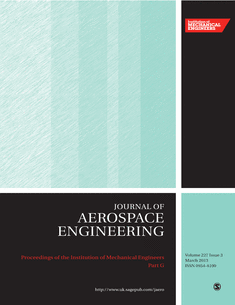
PROCEEDINGS OF THE INSTITUTION OF MECHANICAL ENGINEERS PART G-JOURNAL OF AEROSPACE ENGINEERING
Advancing Aerospace Innovation Through ResearchPROCEEDINGS OF THE INSTITUTION OF MECHANICAL ENGINEERS PART G-JOURNAL OF AEROSPACE ENGINEERING, published by SAGE PUBLICATIONS LTD, stands as a pivotal resource for those immersed in the disciplines of aerospace and mechanical engineering. With an ISSN of 0954-4100 and E-ISSN of 2041-3025, this journal not only contributes to the academic community but also reflects a robust commitment to advancing knowledge within these fields. Operating from the United Kingdom, it has garnered a respectable reputation, evidenced by its category quartiles—ranking Q3 in both Aerospace Engineering and Mechanical Engineering as of 2023. Established in 1989, the journal has evolved substantially over the years, serving as a platform for groundbreaking research and innovative methodologies. Researchers, professionals, and students alike will find a wealth of insights that foster collaboration and advance the frontiers of engineering. Although currently not available as an Open Access publication, the journal remains a critical reference point for those looking to deepen their understanding and contribute to ongoing developments in aerospace technology.

Propulsion and Power Research
Connecting Researchers to Propel the Industry Forward.Propulsion and Power Research, published by KEAI PUBLISHING LTD, is a leading Open Access journal that has been advancing the field of propulsion and power systems since its inception in 2012. With its commitment to fostering scientific discourse and innovation, the journal has gained a prominent position within academia, achieving a Q1 ranking in multiple categories such as Aerospace Engineering, Automotive Engineering, and Fluid Flow and Transfer Processes as of 2023. With an impressive ranking of #18 out of 153 in Aerospace Engineering and consistent recognition in the Scopus rankings, the journal explores critical advancements and research findings that propel the industry forward. As an Open Access publication, it ensures that groundbreaking research is readily available to a broad audience, enhancing collaboration between researchers, practitioners, and students. The journal's scope encompasses a wide range of topics within propulsion and energy solutions, making it an essential resource for anyone keen on discovering significant developments in this dynamic field.
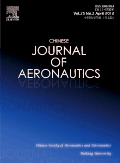
Chinese Journal of Aeronautics
Transforming ideas into aerospace breakthroughs.Chinese Journal of Aeronautics, published by Elsevier Science Inc, serves as a premier platform for cutting-edge research in the field of aerospace and mechanical engineering. With an impressive impact factor that reflects its significant contribution to the discipline, this Open Access journal has been disseminated globally since 2002, allowing unrestricted access to high-quality articles and research findings. The journal is recognized for its exceptional ranking, holding a prestigious Q1 category in both Aerospace Engineering (Rank #8/153, 95th percentile) and Mechanical Engineering (Rank #46/672, 93rd percentile) as of 2023. It publishes original research, reviews, and technical notes that enhance our understanding of aeronautics and its applications, making it an essential resource for researchers, professionals, and students alike. Located in New York, USA, the journal continues to foster innovation and collaboration in aeronautical sciences, shaping the future of aviation and space exploration.
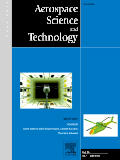
Aerospace Science and Technology
Fostering Global Collaboration in Aerospace ResearchAerospace Science and Technology, published by ELSEVIER FRANCE-EDITIONS SCIENTIFIQUES MEDICALES ELSEVIER, is a leading journal in the field of aerospace engineering, boasting an impressive 2023 Q1 ranking and a significant position in the Scopus Ranks, where it stands at Rank #7 out of 153 in the Engineering - Aerospace Engineering category, reflecting its credibility and impact with a 95th percentile ranking. Since its inception in 1997, this journal has provided a robust platform for the dissemination of pioneering research and advancements in aerospace technology, focusing on innovative methodologies and applications in the aerospace sector. With a commitment to open access, researchers, professionals, and students can easily engage with cutting-edge findings that drive the industry forward. The journal not only seeks to expand knowledge but also aims to foster collaboration among scholars across the globe, making it an essential resource for anyone looking to stay at the forefront of aerospace innovation. For more information, visit its website or refer to its dedicated address at 65 Rue Camille Desmoulins, CS50083, 92442 Issy-Les-Moulineaux, France.